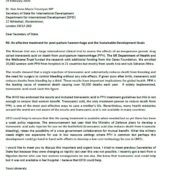site write my paper for me meowessay cheap
The trial in numbers

10,000 patients recruited

21 recruiting countries

193 sites recruited
LATEST NEWS
BLOG POSTS

A Dad’s experience of postpartum haemorrhage
She’s crying, thank God... “Congratulations, you two! Do you want to hold her, mum?” The midwife placed our first child, our little girl, in my wife’s arms. She was beautiful. The relief surged through me and I started laughing. I...
ABOUT THE TRIAL
The WOMAN trial aims to provide the research based information to prevent women dying during childbirth.
The WOMAN trial is testing whether tranexamic acid, a blood clot stabiliser that was discovered in Japan in the 1950’s, can become an essential tool for fighting excessive bleeding soon after giving birth.
more infoPATIENT INFORMATION
If you were a patient randomised into this trial and would like further information about your treatment, click below.
The staff at the hospital where you were being treated for postpartum bleeding should have given you an information leaflet about the WOMAN trial. If you have any questions or concerns about your treatment in the hospital, please contact your doctor in the first instance.
more info




